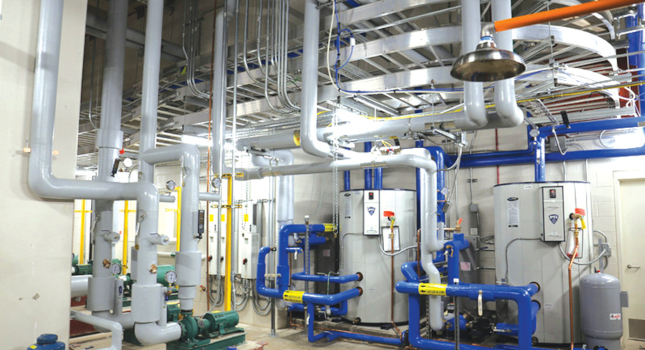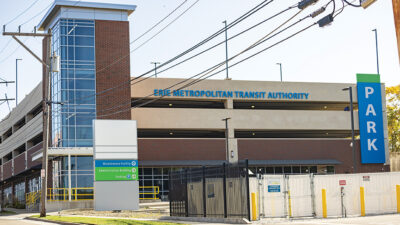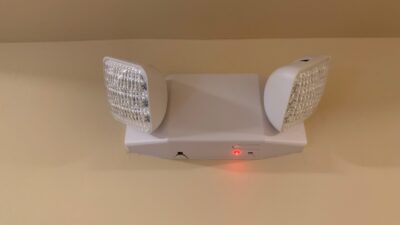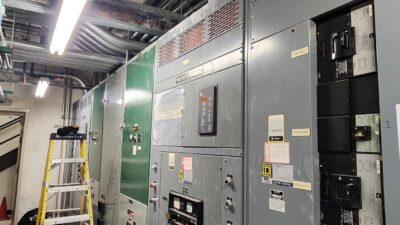A surgical center optimized efficiency with condensing boilers

Heating load calculations for Scottish Rite for Children in Frisco, Texas, yielded a demand of approximately 6 million Btu/hour (6,000 MBH). Two 6,000 MBH (input rating) condensing type boilers for comfort and domestic heating were specified. The design included a central plant with a variable primary pumping arrangement. The systems included redundancy on both the boiler and the pump systems.
The hot water supply design temperature was specified at 150°F and 120°F on the return water side to yield a 30°F temperature difference. The boilers and the heating water piping distribution system delivered heating water to serve the air handler preheat coils; the fan coil units and reheat coils in the variable air volume boxes served different zones within the building.
To take advantage of the condensing boilers and to optimize their efficiency, heating water return and heating water supply from the heating, ventilation and air conditioning loop were used to assist the domestic load in two ways.

First, the domestic water was preheated through a plate frame heat exchanger serving a domestic water-to-water preheater. This preheater was supplied with 140⁰F to 120°F HVAC return water temperature depending on the building demand. This provided lower return water temperature to the condensing boilers in the range of 120⁰F to 110°F. The pre-heat pumps were sized at 43gpm, which yields a heat loss on the HVAC side fluctuating between 645,000 Btu/hour. at 140⁰F return water temperature and 215,000 Btu/hour. at 120⁰F return water temperature. See figure 4.

The second water-to-water domestic heat exchanger was served from the 150°F loop to yield 140°F domestic hot water. Both strategies assured the condensing boilers remain loaded at all times, even during lower HVAC load consumption.
The air handlers serving the building were located inside a mechanical penthouse. These were specified with preheat coils with entering/leaving water temperature of 150°F/120°F, respectively, to pretreat the outside air. Preheat coils are controlled to maintain a discharge air temperature with a preheat control modulation valve.
Furthermore, each air handler served VAV boxes with two-row re-heat coils specified with automatic flow control valves. Discharge air temperature leaving the VAV box reheat coils were designed below 100⁰F to prevent stratification, which occurs with higher leaving air temperatures.




